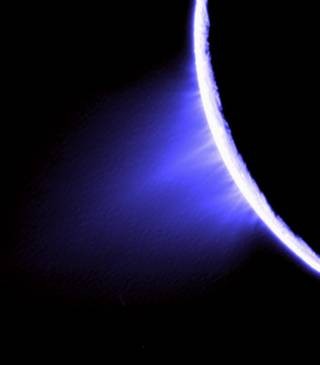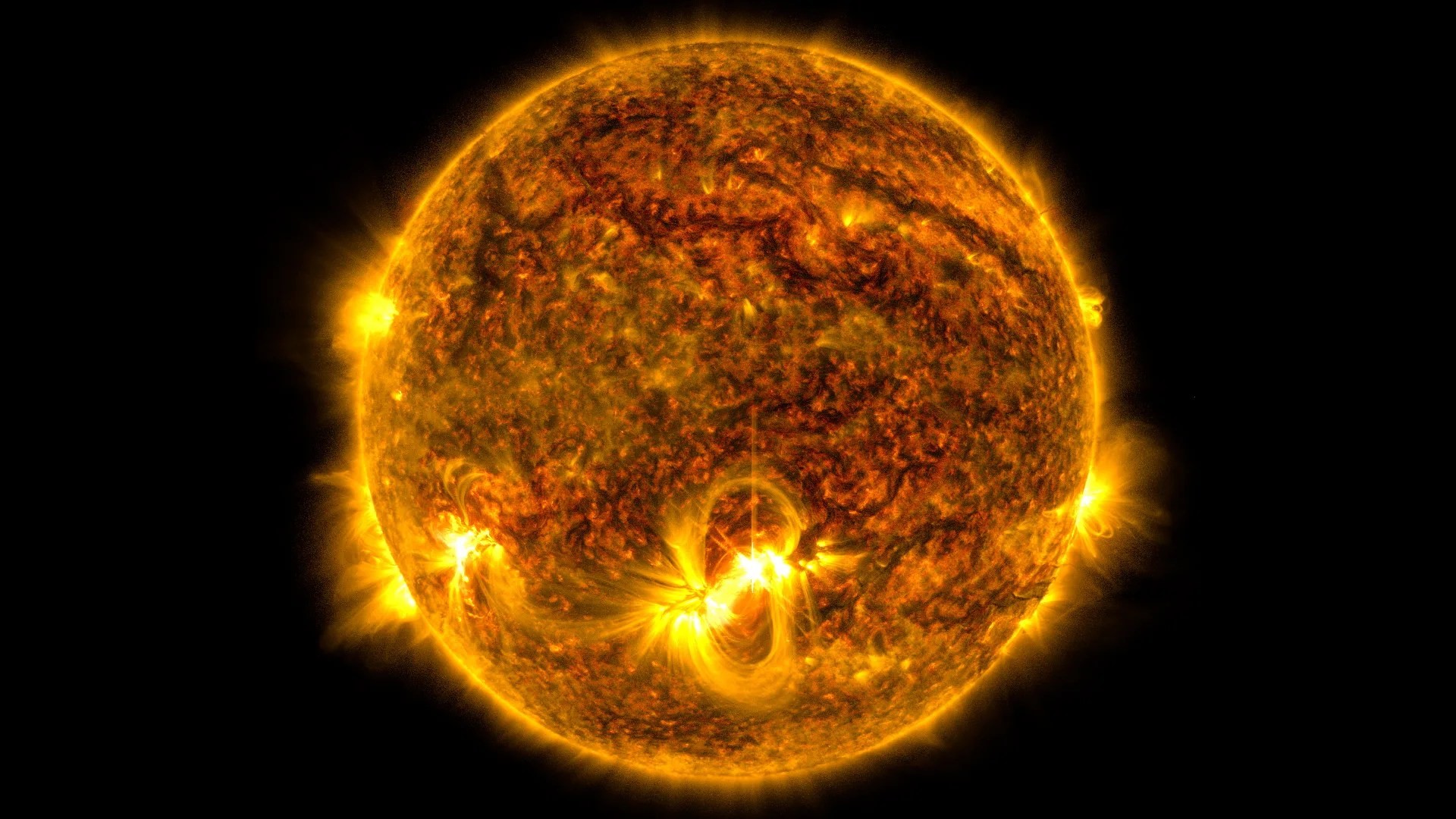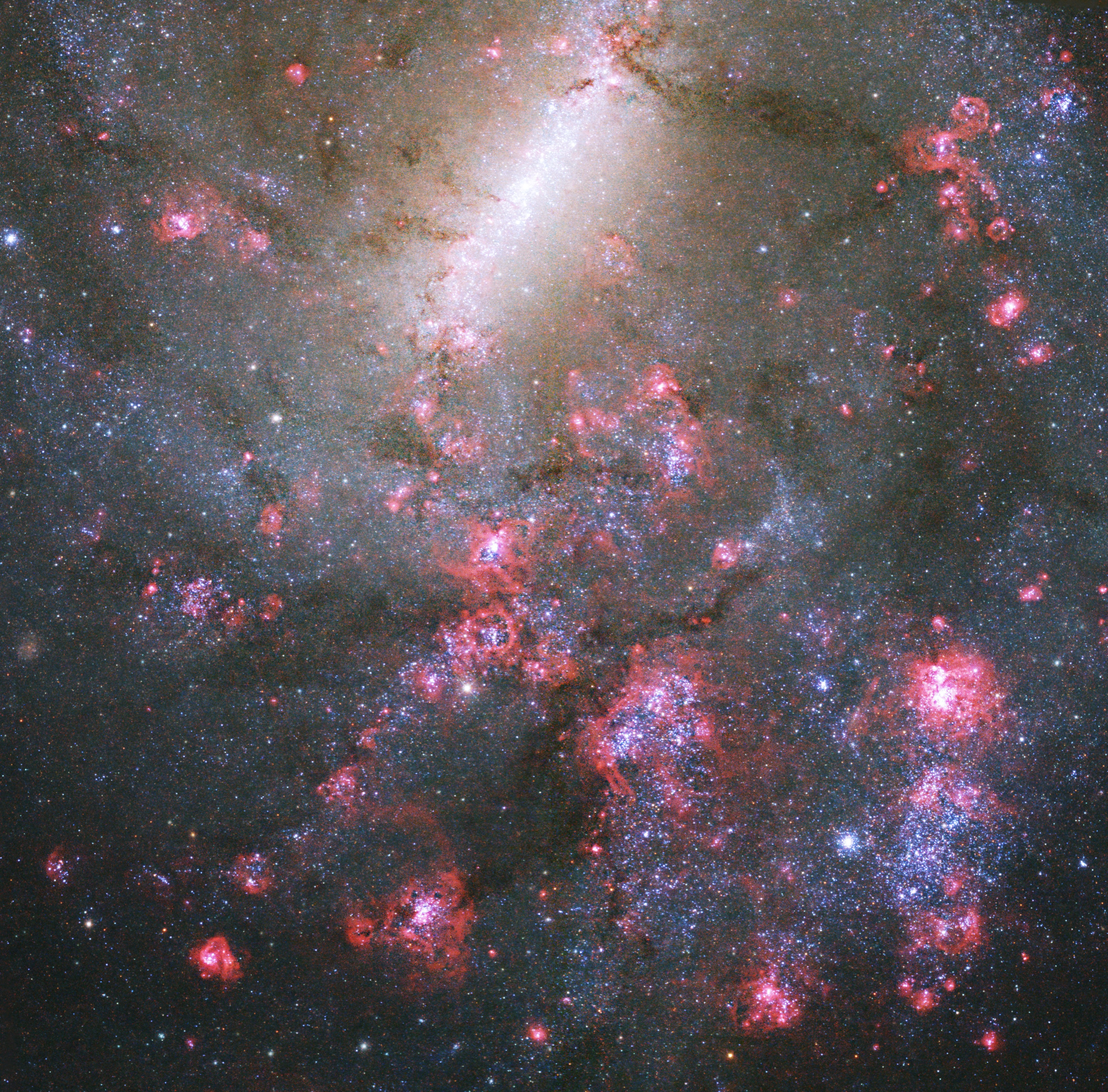Traveling 120 light-years is an unfathomable journey for humans with our current technology, but SIXT.VN can help you explore amazing destinations right here on Earth! Let’s delve into the concept of light-years, what it means to travel such a distance, and how you can embark on incredible adventures closer to home with convenient travel services in Vietnam. Considering the vastness of space, domestic travel and local exploration offer practical alternatives while still satisfying your wanderlust, with SIXT.VN providing top-notch travel solutions, from airport transfers to curated tours.
1. Understanding the Light-Year: A Cosmic Unit of Measurement
What exactly is a light-year, and why is it used to measure distances in space?
A light-year is the distance light travels in one year. To put it into perspective, light travels at an incredible speed of approximately 186,000 miles (300,000 kilometers) per second. This means that in one year, light covers a staggering distance of about 5.88 trillion miles (9.46 trillion kilometers). According to NASA, light-years are essential for measuring the immense distances between stars and galaxies in the cosmos.
1.1 Why Light-Years Are Necessary
Why can’t we use miles or kilometers to measure distances in space? The sheer scale of the universe makes traditional units like miles or kilometers impractical. Using these units would result in numbers so large that they become difficult to comprehend and manage. Light-years provide a more manageable and relatable way to express these vast distances.
1.2 Examples of Light-Year Distances
To grasp the scale, consider these examples:
- Earth to the Sun: About 8 light-minutes.
- Earth to Proxima Centauri (nearest star): Approximately 4.24 light-years.
- Across the Milky Way Galaxy: Around 100,000 light-years.
- Earth to Andromeda Galaxy: Approximately 2.5 million light-years.
1.3 The Speed of Light Explained
Why is the speed of light so important in understanding light-years? The speed of light is a fundamental constant in physics, and nothing in the universe is known to travel faster. It serves as a cosmic speed limit, making it a natural benchmark for measuring interstellar distances. The fact that light has a finite speed means that when we observe objects far away, we are seeing them as they were in the past.
2. The Immensity of 120 Light-Years
What does it really mean to travel 120 light-years?
Traveling 120 light-years implies traversing a distance of 705.6 trillion miles (1,135.2 trillion kilometers). This distance is so vast that it’s almost impossible to fathom in human terms. It’s a distance far beyond our current technological capabilities.
2.1 Contextualizing the Distance
How can we put 120 light-years into a more understandable context? Here are a few points to consider:
- Our Solar System: The diameter of our solar system, including the Oort Cloud, is estimated to be about 2 light-years. Traveling 120 light-years would mean going 60 times the length of our solar system.
- Nearest Star Systems: The nearest star system, Alpha Centauri, is about 4.37 light-years away. Traveling 120 light-years would take you past many star systems.
- Galactic Neighborhood: Our galaxy, the Milky Way, is about 100,000 light-years across. So, traveling 120 light-years would cover a small fraction of our galaxy’s diameter, but a significant distance nonetheless.
2.2 Time and Distance Relationship
If we could travel at the speed of light, how long would it take to travel 120 light-years? Traveling at the speed of light, it would take exactly 120 years to travel 120 light-years. However, traveling at the speed of light is currently impossible according to our understanding of physics.
2.3 Challenges of Interstellar Travel
What are the main challenges of traveling such a vast distance?
- Speed: Reaching even a fraction of the speed of light requires enormous amounts of energy, far beyond our current capabilities.
- Technology: We lack the technology to build spacecraft that can withstand the stresses of interstellar travel, such as extreme temperatures, radiation, and collisions with space dust.
- Time: Even at a significant fraction of the speed of light, the journey would take many human lifetimes.
- Resources: The resources required to build and fuel such a mission would be astronomical.
3. Current Space Travel Technology
What kind of spacecraft do we currently have, and how fast can they travel?
Our current spacecraft are far from being able to travel at the speed of light. They rely on chemical rockets and other propulsion methods that are much slower.
3.1 Speed of Current Spacecraft
What is the speed of our fastest spacecraft? The fastest spacecraft ever built is the Parker Solar Probe, which has reached speeds of up to 430,000 miles per hour (692,000 kilometers per hour). While impressive, this is only about 0.064% of the speed of light.
3.2 Travel Time Comparison
How long would it take the Parker Solar Probe to travel 120 light-years? At its top speed, it would take the Parker Solar Probe approximately 187.5 million years to travel 120 light-years.
3.3 Technological Limitations
What are the main limitations preventing us from traveling faster?
- Propulsion Systems: Current propulsion systems are inefficient and cannot generate the sustained high speeds needed for interstellar travel.
- Energy Sources: We need more powerful and efficient energy sources to power advanced propulsion systems.
- Material Science: We need to develop materials that can withstand the harsh conditions of space, including extreme temperatures and radiation.
4. Theoretical Concepts for Faster Space Travel
Are there any theoretical concepts that could allow us to travel faster in the future?
Scientists and engineers are exploring various theoretical concepts that could potentially enable faster space travel, though many of these are still in the realm of science fiction.
4.1 Warp Drives
What is a warp drive, and how would it work? A warp drive is a theoretical concept that involves warping space-time to shorten the distance between two points. Instead of traveling through space, a spacecraft would essentially bend space around it, creating a shortcut.
4.2 Wormholes
What are wormholes, and could they be used for interstellar travel? Wormholes are theoretical tunnels through space-time that could connect two distant points. However, their existence has not been confirmed, and even if they exist, they might be unstable or require exotic matter to keep them open.
4.3 Ion Propulsion
How does ion propulsion work, and what are its potential advantages? Ion propulsion uses electric fields to accelerate ions, creating a gentle but sustained thrust. It’s much more efficient than chemical rockets, but it produces very low thrust, making it suitable for long-duration missions.
4.4 Nuclear Propulsion
What is nuclear propulsion, and what are its pros and cons? Nuclear propulsion uses nuclear reactions to generate heat, which can then be used to propel a spacecraft. It offers higher thrust and efficiency compared to chemical rockets, but it also raises safety and environmental concerns.
5. Exploring Earth with SIXT.VN
While traveling 120 light-years remains beyond our grasp, SIXT.VN offers incredible opportunities to explore the wonders of Vietnam.
5.1 Why Choose SIXT.VN for Your Vietnam Travel Needs?
Why should travelers consider SIXT.VN for their transportation and travel services in Vietnam? SIXT.VN provides reliable and convenient transportation solutions tailored to meet the diverse needs of travelers. From airport transfers to city tours, SIXT.VN ensures a seamless and enjoyable travel experience.
5.2 SIXT.VN’s Services: Airport Transfers
How can SIXT.VN help with airport transfers? SIXT.VN offers efficient and comfortable airport transfer services, ensuring travelers can quickly and easily reach their destinations. This is particularly useful for international visitors arriving in Vietnam.
5.3 SIXT.VN’s Services: Hotel Booking Assistance
Can SIXT.VN assist with hotel bookings? Yes, SIXT.VN provides assistance with hotel bookings, offering a range of options to suit different budgets and preferences. This service helps travelers find the perfect accommodation for their stay in Vietnam.
5.4 SIXT.VN’s Services: Tour Packages
What types of tour packages does SIXT.VN offer? SIXT.VN offers a variety of tour packages that showcase the beauty and culture of Vietnam. These tours are designed to provide immersive experiences, allowing travelers to explore popular attractions and hidden gems.
5.5 SIXT.VN’s Services: Flight Booking Assistance
Does SIXT.VN offer assistance with flight bookings? Yes, SIXT.VN offers assistance with flight bookings, helping travelers find the best deals and convenient flight options for their travel itineraries.
6. Top Destinations in Vietnam with SIXT.VN
What are some of the best places to visit in Vietnam, and how can SIXT.VN enhance the travel experience?
Vietnam is a country rich in history, culture, and natural beauty. Here are some top destinations to consider:
6.1 Hanoi: The Capital City
What makes Hanoi a must-visit destination? Hanoi, the capital city of Vietnam, is known for its ancient temples, bustling Old Quarter, and delicious street food. SIXT.VN can provide transportation services to explore these attractions comfortably.
6.2 Ha Long Bay: Natural Wonder
Why is Ha Long Bay so special, and how can SIXT.VN help? Ha Long Bay is a UNESCO World Heritage site featuring stunning limestone karsts and emerald waters. SIXT.VN offers tour packages that include transportation to and from Ha Long Bay, as well as boat tours.
6.3 Hoi An: Ancient Town
What is unique about Hoi An, and how can SIXT.VN assist in visiting? Hoi An is a charming ancient town known for its well-preserved architecture, tailor shops, and delicious cuisine. SIXT.VN provides transportation services to Hoi An and can help arrange local tours.
6.4 Ho Chi Minh City: Modern Metropolis
What attractions does Ho Chi Minh City offer, and how can SIXT.VN enhance the visit? Ho Chi Minh City is a vibrant metropolis with a mix of modern skyscrapers and historic landmarks. SIXT.VN offers city tours and airport transfer services to make your visit seamless.
6.5 Sapa: Mountainous Retreat
Why should travelers visit Sapa, and how can SIXT.VN facilitate the trip? Sapa is a mountainous region known for its stunning rice terraces and ethnic minority cultures. SIXT.VN can arrange transportation to Sapa and help organize trekking tours.
7. Planning Your Trip to Vietnam with SIXT.VN
How can travelers plan their trip to Vietnam using SIXT.VN?
Planning a trip to Vietnam is easy with SIXT.VN. Here’s a step-by-step guide:
7.1 Step 1: Determine Your Itinerary
What are the key steps in creating a travel itinerary for Vietnam? Decide on the destinations you want to visit and the activities you want to do. Consider the length of your trip and the time of year.
7.2 Step 2: Book Flights and Accommodation
How can SIXT.VN assist with booking flights and accommodations? Use SIXT.VN to find the best flight deals and book accommodations that suit your budget and preferences.
7.3 Step 3: Arrange Airport Transfers
Why are airport transfers important, and how can SIXT.VN help? Book airport transfers with SIXT.VN to ensure a smooth and hassle-free arrival and departure.
7.4 Step 4: Explore Tour Packages
What are the benefits of booking tour packages with SIXT.VN? Consider booking tour packages with SIXT.VN to explore the top attractions in Vietnam with expert guides and convenient transportation.
7.5 Step 5: Enjoy Your Trip
How can travelers make the most of their trip to Vietnam with SIXT.VN? Relax and enjoy your trip, knowing that SIXT.VN has taken care of your transportation and travel needs.
8. Tips for Traveling in Vietnam
What essential tips should travelers keep in mind when visiting Vietnam?
Traveling in Vietnam can be an enriching experience. Here are some tips to help you make the most of your trip:
8.1 Visa Requirements
What are the visa requirements for entering Vietnam? Check the visa requirements for your nationality before traveling. Many countries are eligible for e-visas, which can be obtained online.
8.2 Currency and Payments
What currency is used in Vietnam, and how can travelers handle payments? The Vietnamese currency is the Dong (VND). It’s advisable to carry some cash, especially when visiting smaller towns and markets. Credit cards are accepted in major hotels and restaurants.
8.3 Transportation Options
What are the common modes of transportation in Vietnam? Besides SIXT.VN, what other options exist? Transportation options include taxis, buses, trains, and motorbikes. SIXT.VN offers a comfortable and reliable alternative to navigate the country.
8.4 Cultural Etiquette
What are some important cultural etiquette rules to observe in Vietnam? Respect local customs and traditions. Dress modestly when visiting temples and pagodas. Avoid public displays of affection.
8.5 Health and Safety
What health and safety precautions should travelers take in Vietnam? Consult your doctor about necessary vaccinations and health precautions. Drink bottled water and be cautious of street food. Be aware of your surroundings and take precautions against petty theft.
9. The Future of Space Travel: Possibilities and Realities
What are the future prospects for space travel, and when might we be able to travel vast distances?
While traveling 120 light-years remains a distant dream, advancements in technology and scientific understanding may one day make interstellar travel a reality.
9.1 Ongoing Research and Development
What current research and development efforts are focused on advancing space travel? Scientists and engineers are working on advanced propulsion systems, improved spacecraft materials, and methods for mitigating the effects of long-duration space travel on the human body.
9.2 Potential Breakthroughs
What potential breakthroughs could revolutionize space travel? Breakthroughs in areas such as fusion power, nanotechnology, and artificial intelligence could revolutionize space travel and make interstellar journeys more feasible.
9.3 Timelines and Predictions
When might we expect to see significant advancements in space travel technology? It’s difficult to predict exact timelines, but some experts believe that significant advancements in space travel technology could occur within the next century.
9.4 The Role of Private Space Companies
How are private space companies contributing to the future of space travel? Private space companies like SpaceX and Blue Origin are playing a major role in advancing space travel by developing reusable rockets, exploring new propulsion methods, and reducing the cost of space missions.
10. FAQs About Traveling 120 Light Years
Here are some frequently asked questions about traveling 120 light-years:
10.1 Is it possible to travel 120 light-years with current technology?
No, it is not possible to travel 120 light-years with current technology, as our spacecraft are far too slow and lack the necessary propulsion systems.
10.2 How long would it take to travel 120 light-years at the speed of light?
It would take 120 years to travel 120 light-years at the speed of light.
10.3 What is the farthest distance humans have traveled in space?
The farthest humans have traveled in space is to the Moon, which is about 0.000013 light-years away.
10.4 What are some theoretical ways to travel faster than light?
Theoretical concepts include warp drives and wormholes, but their feasibility is still uncertain.
10.5 What are the main challenges of interstellar travel?
The main challenges include the immense distances, the need for advanced propulsion systems, and the lack of technology to protect spacecraft and humans from the harsh conditions of space.
10.6 How can SIXT.VN help me explore Vietnam?
SIXT.VN offers airport transfers, hotel booking assistance, tour packages, and flight booking assistance to make your trip to Vietnam seamless and enjoyable.
10.7 What are some must-visit destinations in Vietnam?
Must-visit destinations include Hanoi, Ha Long Bay, Hoi An, Ho Chi Minh City, and Sapa.
10.8 What are the visa requirements for traveling to Vietnam?
Check the visa requirements for your nationality before traveling. Many countries are eligible for e-visas.
10.9 What currency is used in Vietnam?
The Vietnamese currency is the Dong (VND).
10.10 How can I stay safe while traveling in Vietnam?
Take precautions against petty theft, drink bottled water, and consult your doctor about necessary vaccinations.
While interstellar travel remains a distant aspiration, the wonders of our own planet are within reach. Vietnam, with its rich culture and breathtaking landscapes, offers a wealth of experiences for travelers. And with SIXT.VN, exploring this beautiful country has never been easier. From seamless airport transfers to curated tour packages, SIXT.VN ensures a memorable and stress-free journey. So, why dream of distant stars when you can embark on an unforgettable adventure right here on Earth? Contact SIXT.VN today and start planning your dream vacation to Vietnam! Explore the charm of Southeast Asia, immerse yourself in vibrant local traditions, and discover the beauty of Vietnam with reliable and professional travel services. Book your tours and airport transfers with SIXT.VN now!
Address: 260 Cau Giay, Hanoi, Vietnam
Hotline/Whatsapp: +84 986 244 358
Website: SIXT.VN
 Map of tourist attractions in Hanoi
Map of tourist attractions in Hanoi
 Aerial view of the night sky with stars
Aerial view of the night sky with stars
 Illustration of a galaxy with various star clusters
Illustration of a galaxy with various star clusters



